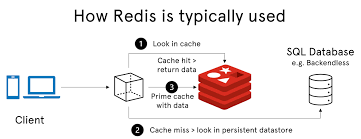↑ 点击上方 关注我们
译者导读
CNCF的毕业项目Open Policy Agent(OPA), 为策略决策需求提供了一个统一的框架与服务。它将策略决策从软件业务逻辑中解耦剥离,将策略定义、决策过程抽象为通用模型,实现为一个通用策略引擎,可适用于广泛的业务场景,比如:判断某用户可以访问哪些资源、允许哪些子网对外访问、工作负载应该部署在哪个集群、容器能执行哪些操作系统功能、系统能在什么时间被访问。需要注意的是,OPA 本身是将策略决策和策略施行解耦,OPA 负责相应策略规则的评估,即决策过程,业务应用服务需要根据相应的策略评估结果执行后续操作,策略的施行是业务强相关,仍旧由业务应用来实现[1]。
这篇译文是笔者对博文《EXTERNALIZED AUTHORIZATION USING OPA AND SPRING SECURITY》的汉化[2]。博文主要介绍基于 OPA 和 Spring Security 对Java WEB应用进行外部访问控制的技术实践(在这里对博文的背景做一定的补充介绍:无论是云原生应用还是传统单体应用,都面临着 "失效的访问控制" 以及 "失效身份认证" 这两类漏洞的严峻风险。这两类漏洞均"跻身"OWASP TOP10 2017以及OWASP TOP10 2021榜单,可谓"老大难"问题;并且,云原生应用带来了API应用接口爆发式增长、对策略设置的灵活性要求提高的挑战;面对这样的风险与挑战, OPA可发挥其在业务场景"判断某用户可以访问哪些资源"的优势 ,帮客户缓解该问题)。
下面将进入译文部分。若读者朋友能够在阅读之后能收获对OPA技术思路的初步认识,甚至对OPA相似业务场景下能力和服务的研发有所助益,笔者将不胜荣幸。文中若有错漏之处,恳请读者朋友能帮忙指正。
前言
虽然 OAuth2 和 OIDC 已经成为 访问控制 的事实标准 , 流行 度很广 ,但现有的 访问控制 标准(如 XACML 、 UMA )难以 落地 甚至使用 。 因此开发人员继续推出自己的解决方案, 但实现起来常常费时费力, 增加 了 维护成本。
在本教程中,我们将探究 如何通过使用 Open Policy Agent 和 Spring Security 将决策外部化 以 简化访问控制 模块 。
一、目标
通常,任何公开 API 的服务都需要" 身份认证"(authentication)和"访问控 制"(authorization)。虽然这两个术语听起来很相似,但二者在安全的作用方面有着根本的不同。"身份认证"是确定身份的过程,"访问控制"是确定权限的过程。二者都是非常关键的主题,因为对它们的关注不足可致最常见的漏洞产生(参考OWASP Top10),今天我们将 重点关注 "访问控制" 。
" 访问控制 " 大致可以分为两类 : 粗粒度 ( 如RBAC(Role-Based Access Control , 基于角色的访问控制 ) ) 和细粒度 ( 如ABAC ( Attribute-Based Access Control , 基于属性的访问控制) ,也称为PBAC(Policy-Based Access Control , 基于策略的访问控制 ))。
通常,在 区域边界 实施粗粒度访问控制策略,但更细粒度的访问控制策略是 需要 在服务级别实现和实施的。这导致服务 的 安全性难以 被 构建 , 并且 安全策略与业务逻辑的紧密耦合, 因此 对开发人员的生产力产生负面影响。我们的目标是将 访问控制 外部化,这允许开发人员简单地实现核心业务功能并重用公共 模块 进行 访问控制 ,同时访问策略变得集中,因此 在更改 策略 时 不需要更改单个服务的代码。
二、开放策略代理
开放策略代理 ( OPA ) 是一个开源策略引擎,它提供了一个简单的 API 便于用户 将策略决策委托给它。当服务需要做出策略决策时,它会查询 OPA 并提供结构化数据作为输入。OPA 根据策略和数据评估输入并生成输出,输出也可以是任意数据结构,不限于简单allow/deny响应。OPA 策略 用 称为 Rego 的高级声明性语言表示。更多关于 OPA 和 Rego 的信息可以在 官方文档 中找到。
1 运行
若要做 演示,只需从GitHub 版本 [3] 下载 OPA 二进制文件并将其作为服务器运行即可:
|--------------------| | ./opa run --server |
或者使用官方的 OPA Docker 镜像运行:
|----------------------------------------------------------| | docker run -p 8181:8181 openpolicyagent/opa run --server |
2 策略
让我们创建一个名为policy.rego的文件并在其中编写一个简单的策略来拒绝所有请求:
|-------------------------------------| | package authz default allow = false |
我们将使用 Policy API 来创建和更新策略:
|-------------------------------------------------------------------------| | curl -X PUT --data-binary @policy.rego localhost:8181/v1/policies/authz |
3 数据
通常,OPA 策略需要一些数据来做出决策,可以使用各种方法将这些数据加载到 OPA 中。使用哪种方法通常取决于数据的大小和更新的频率。此外,加载数据的方式决定了在编写策略时访问它的方式。通过策略决策请求发送的数据 可 通过输入变量进行访问。异步加载的数据始终通过数据变量进行访问。
对于我们的示例,我们将使用其中的两 种 方法。 其中一部分 数据作为输入 , 另一部分数据包含 组织中用户的层次结构 ( 如图1所示 ) ,我们将使用 其 Data API 推送到 OPA。
 图 1 组织架构图
图 1 组织架构图
为此,我们创建一个名为data.json的文件,其内容如下:
|---------------------------------------------------------------------------------------------------------------------------------------------------------------------------------------------------------------------------------------------| | [ {"name": "alice", "subordinates": ["bob", "john"]}, {"name": "bob", "subordinates": ["carol", "david"]}, {"name": "carol", "subordinates": []}, {"name": "david", "subordinates": []}, {"name": "john", "subordinates": []} ] |
并将其加载到 OPA 中:
|--------------------------------------------------------------------------------------------| | curl -X PUT -H "Content-Type: application/json" -d @data.json localhost:8181/v1/data/users |
三、应用程序
现在我们需要构建一个服务,我们将为其 进行访问控制 。它将是一个简单的基于 Spring Boot 的 Web 应用程序,提供用于访问两种资源的 API:salaries ( 薪水 ) 和documents ( 文档 ) 。
1 依赖项
首先,我们添加必要的依赖项:
|-------------------------------------------------------------------------------------------------------------------------------------------------------------------------------------------------------------------------------------------------------------------------------------------------------------------------------------------------------------------------------------------------------------------------------------------------------------------------------------------------------------------------------------------------------| | <dependency> <groupId>org.springframework.boot</groupId> <artifactId>spring-boot-starter-web</artifactId> </dependency> <dependency> <groupId>org.springframework.boot</groupId> <artifactId>spring-boot-starter-security</artifactId> </dependency> <dependency> <groupId>org.springframework.boot</groupId> <artifactId>spring-boot-starter-data-jpa</artifactId> </dependency> <dependency> <groupId>com.h2database</groupId> <artifactId>h2</artifactId> <scope>runtime</scope> </dependency> |
2 Salary组件
接下来,我们创建一个实体类和标准的分层架构组件来表示 Salary :
|-----------------------------------------------------------------------------------------------------------------------------------------------------------------------------------------------------------------------------------------------------------------|
| @Entity public class Salary {
@Id @GeneratedValue(strategy = GenerationType.IDENTITY) private Long id;
@Column(unique = true) private String username; private double amount;
// getters, setters and overriden methods from UserDetails } |
|---------------------------------------------------------------------------------------------------------------------------------------| | @Repository interface SalaryRepository extends CrudRepository<Salary, Long> { Optional<Salary> findByUsername(String username); } |
|-----------------------------------------------------------------------------------------------------------------------------------------------------------------------------------------------------------------------------------------------------------------------------------------------------------------------------------------------------------------------|
| @Service public class SalaryService {
private final SalaryRepository repository;
public SalaryService(SalaryRepository repository) { this.repository = repository; }
public Salary getSalaryByUsername(String username) { return repository.findByUsername(username) .orElseThrow(() -> new ResponseStatusException(HttpStatus.NOT_FOUND)); } } |
|-------------------------------------------------------------------------------------------------------------------------------------------------------------------------------------------------------------------------------------------------------------------------------------------------------------------------------------------------------|
| @RestController @RequestMapping("/salary") public class SalaryController {
private final SalaryService service;
public SalaryController(SalaryService service) { this.service = service; }
@GetMapping("/{username}") public Salary getSalary(@PathVariable String username) { return service.getSalaryByUsername(username); } } |
3 Document组件
然后我们创建相同类型的类来表示 Document :
|----------------------------------------------------------------------------------------------------------------------------------------------------------------------------------------|
| @Entity public class Document {
@Id @GeneratedValue(strategy = GenerationType.IDENTITY) private Long id; private String content; private String owner; // getters and setters } |
|---------------------------------------------------------------------------------------| | @Repository interface DocumentRepository extends CrudRepository<Document, Long> { } |
|---------------------------------------------------------------------------------------------------------------------------------------------------------------------------------------------------------------------------------------------------------------------------------------------------------------------------------------------------------|
| @Service public class DocumentService {
private final DocumentRepository repository;
public DocumentService(DocumentRepository repository) { this.repository = repository; }
public Document getDocumentById(long id) { return repository.findById(id) .orElseThrow(() -> new ResponseStatusException(HttpStatus.NOT_FOUND)); } } |
|---------------------------------------------------------------------------------------------------------------------------------------------------------------------------------------------------------------------------------------------------------------------------------------------------------------------------------------------|
| @RestController @RequestMapping("/document") public class DocumentController {
private final DocumentService service;
public DocumentController(DocumentService service) { this.service = service; }
@GetMapping("/{id}") public Document getDocument(@PathVariable long id) { return service.getDocumentById(id); } } |
4 初始化数据
我们需要一些数据,所以我们创建一个 SQL 脚本在启动时对其进行初始化:
|------------------------------------------------------------------------------------------------------------------------------------------------------------------------------------------------------------------------------------------------------------------------------------------------------------------------------------------------------------------------------------------------------------------------------------------------------------------------------------------------------------------------------------------------------------------------------------------------------------------------------------------------------------------------------------------------------------------------------------------------------------------------------------------------------------------------------------------------------------------------------------------|
| -- salaries INSERT INTO salary (username, amount) VALUES ('alice', 1000); INSERT INTO salary (username, amount) VALUES ('bob', 800); INSERT INTO salary (username, amount) VALUES ('carol', 600); INSERT INTO salary (username, amount) VALUES ('david', 500); INSERT INTO salary (username, amount) VALUES ('john', 900);
-- documents INSERT INTO document (content, owner) VALUES ('Alice Document 1', 'alice'); INSERT INTO document (content, owner) VALUES ('Bob Document 1', 'bob'); INSERT INTO document (content, owner) VALUES ('Bob Document 2', 'bob'); INSERT INTO document (content, owner) VALUES ('David Document 1', 'david'); INSERT INTO document (content, owner) VALUES ('David Document 2', 'david'); INSERT INTO document (content, owner) VALUES ('Carol Document 1', 'carol'); INSERT INTO document (content, owner) VALUES ('John Document 1', 'john'); |
5 安全
我们的应用程序几乎准备就绪,剩下的就是 对 Web 安全性 进行配置 。为了简单起见,我们将用户的凭据存储在内存中并 基于 HTTP 协议进行 基本 的 身份验证:
|--------------------------------------------------------------------------------------------------------------------------------------------------------------------------------------------------------------------------------------------------------------------------------------------------------------------------------------------------------------------------------------------------------------------------------------------------------------------------------------------------------------------------------------------------------------------------------------------------------------------------------------------------------------------------------------------------------------------------------------------------------------------------------------------------------------------------------------------------------------------------------------------------------------------------------------------------------|
| @Configuration public class SecurityConfig extends WebSecurityConfigurerAdapter {
@Bean public PasswordEncoder passwordEncoder() { return PasswordEncoderFactories.createDelegatingPasswordEncoder(); }
@Override protected void configure(AuthenticationManagerBuilder auth) throws Exception { auth.inMemoryAuthentication() .withUser("alice").password(passwordEncoder().encode("pass")).roles("CEO") .and() .withUser("bob").password(passwordEncoder().encode("pass")).roles("CTO") .and() .withUser("carol").password(passwordEncoder().encode("pass")).roles("DEV") .and() .withUser("david").password(passwordEncoder().encode("pass")).roles("DEV") .and() .withUser("john").password(passwordEncoder().encode("pass")).roles("HR"); }
@Override protected void configure(HttpSecurity http) throws Exception { http .authorizeRequests() .anyRequest().authenticated() .and() .formLogin().disable() .httpBasic(); } } |
为了确保一切正常,我们可以运行应用程序并尝试发送几个请求:
|-----------------------------------------------------------------------------------------------------------------------------------------------------------------------------------------------------------------------------------------------------| | > curl localhost:8080/salary/david {"timestamp":"2020-10-30T00:00:00.000+00:00","status":401,"error":"Unauthorized","message":"","path":"/salary/david"} > curl carol:pass@localhost:8080/salary/david {"id":4,"username":"david","amount":500.0} |
正如我们所料,该应用程序可以工作并且需要身份验证,但是由于缺乏 访问控制的 检查,任何用户都可以访问其他用户的工资。
四、访问控制
最后,当 OPA 服务器启动并且应用程序准备就绪时,我们可以继续实施 访问控制 。
1 使用 AccessDecisionVoter
Open Policy Agent 贡献者 为 Spring Security 提供了一个集成 方式[4] ,它提供了 针对 AccessDecisionVoter 的简单实现,该实现使用 OPA 进行 API 授权决策。由于我们自己实现这个类很容易, 并且 我们可以更好地 做 实现,所以我们不会使用这个依赖。
我们需要 实现 AccessDecisionVoter 接口, 这将收集可能 有助于决策 的可用数据,将其发送给 OPA 进行评估,并根据结果,授予访问权限或拒绝访问。我们的实现会将经过身份验证的用户名、他们的权限列表、HTTP 方法和请求路径作为分段分隔的数组发送。将路径分割成段可以让我们在编写策略时更容易访问路径变量。此外,为了更清楚地了解发生了什么,我们将记录所有发送的请求和收到的响应:
|--------------------------------------------------------------------------------------------------------------------------------------------------------------------------------------------------------------------------------------------------------------------------------------------------------------------------------------------------------------------------------------------------------------------------------------------------------------------------------------------------------------------------------------------------------------------------------------------------------------------------------------------------------------------------------------------------------------------------------------------------------------------------------------------------------------------------------------------------------------------------------------------------------------------------------------------------------------------------------------------------------------------------------------------------------------------------------------------------------------------------------------------------------------------------------------------------------------------------------------------------------------------------------------------------------------------------------------------------------------------------------------------------------------------------------------------------------------------------------------------------------------------------------------------------------------------------------------------------------------------------------------------------------------------------------------------------------------------------------------------------------------------------|
| public class OpaVoter implements AccessDecisionVoter<FilterInvocation> {
private static final String URI = "http://localhost:8181/v1/data/authz/allow"; private static final Logger LOG = LoggerFactory.getLogger(OpaVoter.class);
private final ObjectMapper objectMapper = new ObjectMapper(); private final RestTemplate restTemplate = new RestTemplate();
@Override public boolean supports(ConfigAttribute attribute) { return true; }
@Override public boolean supports(Class clazz) { return FilterInvocation.class.isAssignableFrom(clazz); }
@Override public int vote(Authentication authentication, FilterInvocation filterInvocation, Collection<ConfigAttribute> attributes) { String name = authentication.getName(); List<String> authorities = authentication.getAuthorities() .stream() .map(GrantedAuthority::getAuthority) .collect(Collectors.toUnmodifiableList()); String method = filterInvocation.getRequest().getMethod(); String[] path = filterInvocation.getRequest().getRequestURI().replaceAll("^/|/$", "").split("/");
Map<String, Object> input = Map.of( "name", name, "authorities", authorities, "method", method, "path", path );
ObjectNode requestNode = objectMapper.createObjectNode(); requestNode.set("input", objectMapper.valueToTree(input)); LOG.info("Authorization request:n" + requestNode.toPrettyString());
JsonNode responseNode = Objects.requireNonNull(restTemplate.postForObject(URI, requestNode, JsonNode.class)); LOG.info("Authorization response:n" + responseNode.toPrettyString());
if (responseNode.has("result") && responseNode.get("result").asBoolean()) { return ACCESS_GRANTED; } else { return ACCESS_DENIED; } } } |
现在,我们可以使用 Vector 列表(包括我们的自定义投票器实现类 Vector )定义 AccessDecisionManager 的 bean 类 ,并配置 Spring Security 以使用它:
|-------------------------------------------------------------------------------------------------------------------------------------------------------------------------------------------------------------------------------------------------------------------------------------------------------------------------------------------------------------------------------------------------------------------------------------------------------------------------------------------------------------------------------------------------------------------|
| public class SecurityConfig extends WebSecurityConfigurerAdapter {
// ...
@Override protected void configure(HttpSecurity http) throws Exception { http .authorizeRequests() .anyRequest().authenticated() .accessDecisionManager(accessDecisionManager()) .and() .formLogin().disable() .httpBasic(); }
@Bean public AccessDecisionManager accessDecisionManager() { List<AccessDecisionVoter<?>> decisionVoters = List.of( new RoleVoter(), new AuthenticatedVoter(), new OpaVoter() ); return new UnanimousBased(decisionVoters); } } |
2 策略
由于我们只有一个拒绝所有请求的策略,因此无论哪个用户尝试请求薪水或任何用户,他们都会得到 403:
|---------------------------------------------------------------------------------------------------------------------------------------------------------------------------------------------------------------------------------------------------------------------------------------------------------------------------------| | > curl alice:pass@localhost:8080/salary/alice {"timestamp":"2020-10-30T00:00:00.000+00:00","status":403,"error":"Forbidden","message":"","path":"/salary/alice"} > curl alice:pass@localhost:8080/salary/bob {"timestamp":"2020-10-30T00:00:00.000+00:00","status":403,"error":"Forbidden","message":"","path":"/salary/bob"} |
所以,是时候让我们看看 如何编写策略 了。让我们从最简单的开始,让用户访问他们的薪水。
为此,我们需要policy.rego通过添加以下内容进行更新:
|----------------------------------------------------------------------------------------------------------| | allow { some username input.method == "GET" input.path = ["salary", username] input.name == username } |
现在,如果您没有忘记将 策略 更新推送到 OPA,所有用户都可以访问他们的薪水,但仍然无法访问其他人的薪水:
|----------------------------------------------------------------------------------------------------------------------------------------------------------------------------------------------------------------------------------------------------------| | > curl alice:pass@localhost:8080/salary/alice {"id":1,"username":"alice","amount":1000.0} > curl alice:pass@localhost:8080/salary/bob {"timestamp":"2020-10-30T00:00:00.000+00:00","status":403,"error":"Forbidden","message":"","path":"/salary/bob"} |
那不是很棒吗?我们甚至不必重新启动我们的应用程序。
我们还可以添加基于角色的策略,例如,让具有 HR 角色的用户访问所有薪水:
|--------------------------------------------------------------------------------------------------| | allow { input.method == "GET" input.path = ["salary", ] input.authorities[] == "ROLE_HR" } |
现在具有此角色的用户可以访问所有用户的工资:
|------------------------------------------------------------------------------------------------------------------------------------------------------------------------------------| | > curl john:pass@localhost:8080/salary/alice {"id":1,"username":"alice","amount":1000.0} > curl john:pass@localhost:8080/salary/david {"id":4,"username":"david","amount":500.0} |
到目前为止,在我们所有的策略中,我们都使用了输入数据,我们将尝试使用加载到 OPA 中的数据来编写策略。例如,我们可以让用户访问其直接下属的薪水:
|-----------------------------------------------------------------------------------------------------------------------------------------------------------------------| | allow { some username, i input.method == "GET" input.path = ["salary", username] data.users[i].name == input.name data.users[i].subordinates[_] == username } |
用户现在可以访问其直接下属的薪水,但 尚不支持刻画 组织的完整层次结构:
|-------------------------------------------------------------------------------------------------------------------------------------------------------------------------------------------------------------------------------------------------------------------------------------------------------------------------------------------------| | > curl bob:pass@localhost:8080/salary/david {"id":4,"username":"david","amount":500.0} > curl alice:pass@localhost:8080/salary/bob {"id":2,"username":"bob","amount":800.0} > curl alice:pass@localhost:8080/salary/david {"timestamp":"2020-10-30T00:00:00.000+00:00","status":403,"error":"Forbidden","message":"","path":"/salary/david"} |
为了让用户能够访问所有级别下属 的相关信息 ,我们需要编写更复杂的策略,幸运的是,Rego 通过提供大量有用的功能为我们 创造 了这个机会。由于我们的层次结构是一个图,我们的任务是为每个顶点找到可到达的顶点,我们可以使用 具备该特殊功能 的函数graph.reachable。使用某些功能可能需要对数据进行预处理,例如,在这种情况下,我们需要将数据"展平",将其 描绘 为一张图,其中 " 用户 " 是 "键" , "直接 下属 " 是 "值" ,即:
|---------------------------------------------------------------------------------------------------------| | { "alice": ["bob", "john"], "bob": ["carol", "david"], "carol": [], "david": [], "john": [] } |
Rego 允许我们定义支持数据自动迭代的规则,并生成可以像 JSON 对象一样访问的输出。
首先,我们添加一个规则来通过展平我们的数据来生成图:
|-----------------------------------------------------------------------------------------------------| | users_graph[data.users[username].name] = edges { edges := data.users[username].subordinates } |
接下来,我们添加一个规则,该规则将适当的函数应用到由前一个规则生成的图上,以获取每个用户的所有可达用户:
|------------------------------------------------------------------------------------------------------------------| | users_access[username] = access { users_graph[username] access := graph.reachable(users_graph, {username}) } |
结果,我们得到如下所示的数据:
|---------------------------------------------------------------------------------------------------------------------------------------------------------------| | { "alice": ["alice", "bob", "john", "carol", "david"], "bob": ["bob", "carol", "david"], "carol": ["carol"], "david": ["david"], "john": ["john"] } |
现在我们可以根据这些数据编写一个策略,因为它已经为用户提供了访问他们的薪水和直接下属的薪水的权限,我们可以删除之前的策略:
|----------------------------------------------------------------------------------------------------------------------------------------------------------------------------------------------------------------------------------------------------------------------------------------------------------------------------------------------------------------------------------------------------------------------------------------------------------------------------------------------------------------------------|
| package authz
default allow = false
allow { input.method == "GET" input.path = ["salary", ] input.authorities[] == "ROLE_HR" }
allow { some username input.method == "GET" input.path = ["salary", username] username == users_access[input.name][_] }
users_graph[data.users[username].name] = edges { edges := data.users[username].subordinates }
users_access[username] = access { users_graph[username] access := graph.reachable(users_graph, {username}) } |
让我们检查 访问控制 是否符合我们的 策略 :
|--------------------------------------------------------------------------------------------------------------------------------------------------------------------------------------------------------------------------------------------------------------------------------------------------------------------------------------------------------------------------------------------------------------------------------------------------| | > curl alice:pass@localhost:8080/salary/alice {"id":1,"username":"alice","amount":1000.0} > curl alice:pass@localhost:8080/salary/david {"id":4,"username":"david","amount":500.0} > curl david:pass@localhost:8080/salary/alice {"timestamp":"2020-10-30T00:00:00.000+00:00","status":403,"error":"Forbidden","message":"","path":"/salary/alice"} > curl john:pass@localhost:8080/salary/alice {"id":1,"username":"alice","amount":1000.0} |
3 使用注解
您可能已经注意到, 当前 我们所有的 策略 都只适用于获取工资, 而"文档组件" 被放在一边,它们的访问不受用户系统的访问控制。问题是,当前存储在OPA中并从AccessDecisionVoter发送的数据可能不足以做出 访问控制的决策 。我们无法将所有数据加载到 OPA 中,因为数据可能是高度动态的或 海量 的,如果我们开始为AccessDecisionVoter的每个请求添加单独的逻辑,这个类 的代码将造成一定的混乱度 。
这个问题的一个解决方案可能是使用内置函数使OPA在评估期间提取数据。在实现边缘 访问控制 时,这可能是一个很好的解决方案,但由于我们现在正在服务本身中实现 访问控制 ,因此我们更容易在最初将所有必要的数据发送到OPA,并将服务之间的请求数量降至最低。此外,我们可能希望对何时调用 OPA 有更多的控制权,而不是对每个请求都进行控制。
除了使用 Spring Security 提供的 权限管理的投票器 之外,另一种 访问控制 机制是使用 SpEL 表达式来实现 Web 和方法安全的能力。我们将 通过 一些支持表达式的 注解 在方法级 进行应用 。要开启 全局性的 基于方法的安全认证机制 及相应的pre/post注解 ,我们需要将以下 注解 添加到一个配置文件中:
|----------------------------------------------------| | @EnableGlobalMethodSecurity(prePostEnabled = true) |
我们可以通过实现PermissionEvaluator 接口 来使用常见的hasPermission () 表达式,但这将使我们不得不使用这个接口的方法,相反,我们将利用表达式引用和使用任何SpringBean的方法的能力。让我们摆脱AccessDecisionVoter,创建一个用于表达式的组件:
|-----------------------------------------------------------------------------------------------------------------------------------------------------------------------------------------------------------------------------------------------------------------------------------------------------------------------------------------------------------------------------------------------------------------------------------------------------------------------------------------------------------------------------------------------------------------------------------------------------------------------------------------------------------------------------------------------------------------------------------------------------------------------------------------------------------------------------------------------------------------------------------------------------------------------------------------------------------------------------------------------------------------------------------------------------------------------------------------------------------------------------------------------------------------------------------------------------------------------------------------------------------------------------------------------------------------------------------------------------------------------------------------------------------------------------------------------------------------------------------------------------------------------------------------------------------------------------------------------------------------------------------|
| @Component public class OpaClient {
private static final String URI = "http://localhost:8181/v1/data/authz/allow"; private static final Logger LOG = LoggerFactory.getLogger(OpaClient.class);
private final ObjectMapper objectMapper = new ObjectMapper(); private final RestTemplate restTemplate = new RestTemplate();
public boolean allow(String action, Map<String, Object> resourceAttributes) { Authentication authentication = SecurityContextHolder.getContext().getAuthentication(); if (authentication == null || !authentication.isAuthenticated() || action == null || resourceAttributes == null || resourceAttributes.isEmpty()) { return false; }
String name = authentication.getName(); List<String> authorities = authentication.getAuthorities() .stream() .map(GrantedAuthority::getAuthority) .collect(Collectors.toUnmodifiableList()); Map<String, Object> subjectAttributes = Map.of( "name", name, "authorities", authorities );
Map<String, Object> input = Map.of( "subject", subjectAttributes, "resource", resourceAttributes, "action", action );
ObjectNode requestNode = objectMapper.createObjectNode(); requestNode.set("input", objectMapper.valueToTree(input)); LOG.info("Authorization request:n" + requestNode.toPrettyString());
JsonNode responseNode = Objects.requireNonNull(restTemplate.postForObject(URI, requestNode, JsonNode.class)); LOG.info("Authorization response:n" + responseNode.toPrettyString());
return responseNode.has("result") && responseNode.get("result").asBoolean(); } } |
我们实现的组件只有一个方法,该方法将请求的操作和请求访问的资源的属性作为参数,并将所有这些数据与身份验证数据一起发送到 OPA 以供决策, 方法的返回值是布尔型 。
我们现在可以 在 SalaryService 中使用 @PreAuthroze 注解 :
|-------------------------------------------------------------------------------------------------------------------------------------------------------------------------------------------------------------------------------------------------------------------------------| | @PreAuthorize("@opaClient.allow('read', T(java.util.Map).of('type', 'salary', 'user', #username))") public Salary getSalaryByUsername(String username) { return repository.findByUsername(username) .orElseThrow(() -> new ResponseStatusException(HttpStatus.NOT_FOUND)); } |
并 在 DocumentService 中使用 @PostAuthorize 注解 :
|----------------------------------------------------------------------------------------------------------------------------------------------------------------------------------------------------------------------------------------------------------------------| | @PostAuthorize("@opaClient.allow('read', T(java.util.Map).of('type', 'document', 'owner', returnObject.owner))") public Document getDocumentById(long id) { return repository.findById(id) .orElseThrow(() -> new ResponseStatusException(HttpStatus.NOT_FOUND)); } |
只需调整以前的策略以适应新的数据格式,并为文档添加策略,例如, 配置 用户 对 文档 的访问控制权限 :
|---------------------------------------------------------------------------------------------------------------------------------------------------------------------------------------------------------------------------------------------------------------------------------------------------------------------------------------------------------------------------------------------------------------------------------------------------------------------------------------------------------------------------------------------------------------------------------------------------------------------------------------------------------------|
| package authz
default allow = false
allow { input.action == "read" input.resource.type == "salary" input.subject.authorities[] == "ROLE_HR" }
allow { input.action == "read" input.resource.type == "salary" input.resource.user == users_access[input.subject.name][] }
allow { input.action == "read" input.resource.type == "document" input.resource.owner == input.subject.name }
users_graph[data.users[username].name] = edges { edges := data.users[username].subordinates }
users_access[username] = access { users_graph[username] access := graph.reachable(users_graph, {username}) } |
注:为了便于读者朋友理解,笔者增补了图2的应用改造示意图以及图3的鉴权方案对比图。
 图 2 应用改造示意图
图 2 应用改造示意图
 图 3 鉴权方案对比图
图 3 鉴权方案对比图
最后,让我们 验证所做的工作对 于 Document组件 和 Salary组件生效 :
|--------------------------------------------------------------------------------------------------------------------------------------------------------------------------------------------------------------------------------------------------------------------------------------------------------------------------------------------------------------------------------------------------------------------------------------------------------------------------------------------------------------------------------------------------------------------------------------------------------------------------------------------------------------------------------------------------------| | > curl alice:pass@localhost:8080/salary/bob {"id":2,"username":"bob","amount":800.0} > curl john:pass@localhost:8080/salary/bob {"id":2,"username":"bob","amount":800.0} > curl bob:pass@localhost:8080/salary/john {"timestamp":"2020-10-30T00:00:00.000+00:00","status":403,"error":"Forbidden","message":"","path":"/salary/john"} > curl alice:pass@localhost:8080/document/1 {"id":1,"content":"Alice Document 1","owner":"alice"} > curl alice:pass@localhost:8080/document/2 {"timestamp":"2020-10-30T00:00:00.000+00:00","status":403,"error":"Forbidden","message":"","path":"/document/2"} > curl bob:pass@localhost:8080/document/2 {"id":2,"content":"Bob Document 1","owner":"bob"} |
五、结论
这是一个简单的示例, 展示了我们如何将 访问控制 决策委托给 Open Policy Agent,并在边缘服务和独立微服务中使用 Spring Security 以 强制执行它们 。
完整的源代码被托管在GitHub仓库[5]中。
六、参考资料
[1] https://segmentfault.com/a/1190000039300757
[2] https://sultanov.dev/blog/externalized-authorization-using-opa-and-spring-security/
[3] https://github.com/open-policy-agent/opa/releases
[4] https://github.com/open-policy-agent/contrib/tree/main/spring_authz
[5] https://github.com/AnarSultanov/examples/tree/master/spring-security-opa-authz
本文作者: 安全狗
本文为安全脉搏专栏作者发布,转载请注明: https://www.secpulse.com/archives/190847.html
 51工具盒子
51工具盒子




